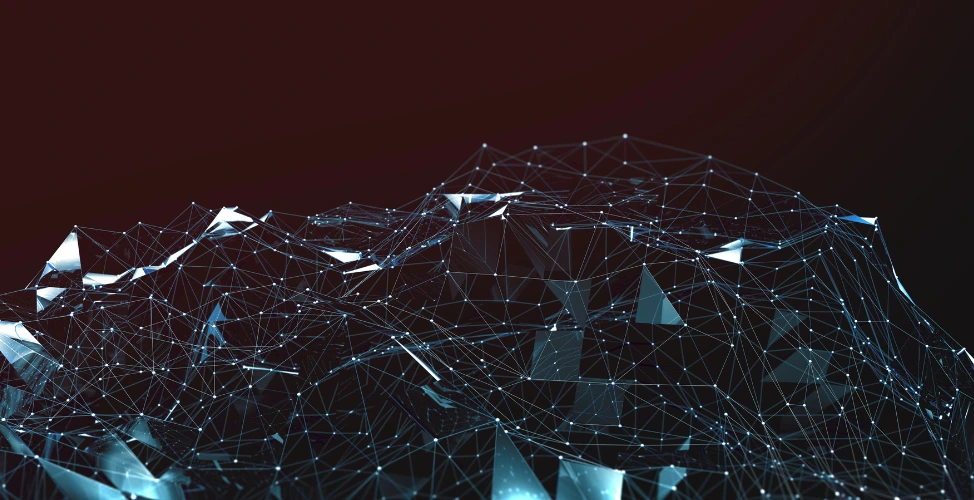August 20, 2021
What Is Agentic RAG? A New Era of Retrieval-Augmented AI Agents
In today’s AI-driven enterprise landscape, businesses demand more than just static, question-answering bots. They need intelligent, autonomous systems capable of navigating complex workflows, adapting to context, and retrieving the most accurate, real-time information. Enter Agentic RAG, a breakthrough that combines Retrieval-Augmented Generation (RAG) with the autonomy of agentic AI. As enterprise AI evolves, SmartOSC is leading the charge in helping organizations deploy these intelligent systems across customer service, knowledge workflows, and operational pipelines.

Highlights
- Agentic RAG fuses retrieval-based AI with autonomous agents for dynamic, high-context decision-making.
- It’s ideal for businesses seeking accurate outputs, self-monitoring agents, and long-horizon task automation.
- SmartOSC designs and implements Agentic RAG platforms that scale with enterprise workflows.
Understanding Agentic RAG
As artificial intelligence evolves from simple response generation to complex reasoning and automation, Agentic RAG has emerged as a foundational framework for building next-generation AI systems. It combines two key advancements, Retrieval-Augmented Generation (RAG) and agentic AI behaviors, to create AI agents that are accurate, autonomous, and context-aware. Let’s break down each component and explore how they work together.
What Is Retrieval-Augmented Generation (RAG)?
Retrieval-Augmented Generation is a hybrid AI architecture that bridges the gap between large language models (LLMs) and up-to-date, external knowledge. While traditional LLMs rely solely on static training data, RAG introduces a retrieval mechanism that enables models to access real-world information during inference.
Here’s how it works:
- When a user submits a query or task, the system retrieves relevant documents or data entries from an external source, typically a vector database, internal knowledge base, or document repository.
- These documents are used to supplement the model’s context, allowing it to generate outputs that are both accurate and domain-specific.
The core benefits of RAG include:
- Real-time accuracy: Responses reflect the most recent and relevant data available.
- Contextual depth: Answers are grounded in enterprise-specific knowledge, not just general training data.
- Reduced hallucinations: RAG significantly lowers the chance of generating factually incorrect information, a major concern with standalone LLMs.
Industries such as healthcare, legal, financial services, and logistics use RAG-based systems to ensure compliance, precision, and trustworthiness in high-stakes AI applications. For instance, a telecommunications company deploying a RAG-enabled chatbot saw a 35% increase in customer satisfaction and a 50% reduction in average response time.
What Does “Agentic” Mean in AI?
The term “agentic” in AI refers to the capacity of an artificial intelligence system to function as an autonomous agent, one that can understand goals, make decisions, take actions, and learn from the outcomes of those actions. Unlike traditional models that simply respond to inputs, agentic AI systems actively manage workflows and interact with their environments.
Key agentic behaviors include:
- Planning: Structuring multi-step strategies to achieve a goal.
- Tool use: Calling APIs, using databases, or triggering automation tools.
- Memory retention: Tracking past actions, user interactions, or state variables across sessions.
- Feedback loops: Monitoring outcomes and refining future decisions accordingly.
This agentic capacity allows AI to take on roles previously filled by humans, such as scheduling, analyzing, reporting, and even decision-making, especially in environments where processes are rule-based but nuanced.
Defining Agentic RAG
Agentic RAG is the fusion of these two powerful concepts, retrieval-augmented intelligence and autonomous agent behavior. It represents a new class of AI agents that are not only well-informed but also capable of acting independently within enterprise ecosystems.
Rather than simply answering a query, an Agentic RAG system will:
- Interpret a multi-step task
- Retrieve knowledge in real time from internal and external systems
- Use reasoning to break down the task
- Invoke tools (e.g., CRM systems, report generators, schedulers)
- Monitor its progress and adjust behavior dynamically
- Complete the task with minimal human oversight
This makes Agentic RAG ideal for handling complex, real-world challenges such as:
- Generating personalized compliance reports using the latest regulations
- Validating contracts by retrieving and comparing policy documents
- Automating support ticket triage based on historical resolutions
- Preparing dynamic sales proposals based on CRM and market data
In short, Agentic RAG transforms AI from a passive assistant into a proactive digital teammate, capable of delivering real business outcomes at scale.
How Agentic RAG Works
Agentic RAG systems are designed to simulate intelligent, goal-oriented behavior by combining retrieval-based reasoning with autonomous task execution. This is achieved through a sophisticated, multi-layered workflow and a modular set of components that work in harmony to deliver reliable, contextual, and scalable performance. Here’s a deeper look into how this system operates from end to end.
Workflow Architecture
The Agentic RAG pipeline consists of a dynamic sequence of actions that transforms an input request into an intelligent, actionable outcome. Unlike traditional models that offer single-response answers, this architecture enables agents to plan, act, learn, and refine, all in a continuous loop.
- Task Initiation: The process begins when a user, or another system, submits a query or triggers a task. This input can range from a simple question (e.g., “Summarize the quarterly performance”) to a complex multi-step objective (e.g., “Generate a compliance report and notify the legal team”).
- Planning and Reasoning: Once the task is received, the agent engages in agentic planning, a form of structured reasoning where the system determines how to approach the task. It identifies sub-tasks, selects tools or APIs to use, and sets up checkpoints for review or intervention.
- Retrieval Phase: The agent queries a vector database, enterprise document repository, or hybrid data store to fetch relevant knowledge. This retrieval step ensures the model has access to real-time, domain-specific context instead of relying solely on pre-trained data. It’s critical for generating accurate, trustworthy responses and decisions.
- Generation Phase: With the relevant information retrieved, the Large Language Model (LLM) generates human-like content. This could include writing summaries, filling forms, drafting emails, updating dashboards, or producing analytical reports, always grounded in the retrieved data to ensure factual correctness and coherence.
- Execution and Tool Use: Next, the agent transitions from insight to action. It might: Submit API requests (e.g., update CRM records)
- Trigger automations (e.g., send alerts, book meetings)
- Initiate workflows (e.g., start onboarding for new employees)
- Feedback and Self-Monitoring Loop: The system doesn’t stop at execution. A built-in feedback mechanism evaluates the quality and impact of its actions. If needed, the agent will revise its steps, request additional data, or escalate to a human for assistance. This self-assessment process enables adaptive learning and continual performance improvement over time.
See more: Why Custom AI Agents Are the Future of Intelligent Software
Core Components of Agentic RAG
To support this intelligent workflow, Agentic RAG systems are composed of multiple interlocking components, each playing a specific role in enabling autonomy, accuracy, and adaptability.
- Retriever: The retriever acts as the agent’s “memory scout.” It queries structured and unstructured data sources, such as vector databases, enterprise content libraries, or indexed documents, and returns high-relevance passages. The retriever is responsible for narrowing down the information space so the LLM works only with what’s contextually useful.
- Generator (LLM): At the heart of the system lies a Large Language Model capable of synthesizing natural language outputs. Unlike traditional LLMs that generate responses based only on prior training, this generator uses the retriever’s output as context to produce accurate, grounded, and task-relevant content. It adapts tone, format, and detail based on both user intent and retrieved facts.
- Agentic Layer: This component enables autonomy. It acts like an intelligent orchestrator, capable of:
- Interpreting tasks and breaking them into steps
- Selecting tools and APIs
- Making decisions dynamically as new information is uncovered
- Memory Store: To function reliably over time, the agent needs memory, both short-term (session context) and long-term (historic actions, user preferences, prior results). The memory store ensures continuity, allowing the system to:
- Reference past decisions
- Maintain consistent behavior
- Reduce redundant retrievals and improve personalization
Key Benefits of Agentic RAG for Enterprises
Enhanced Accuracy and Context Awareness
One of the most significant advantages of Agentic RAG lies in its ability to generate precise and context-aware responses by integrating real-time information retrieval with language generation. Traditional AI models often rely solely on pre-trained knowledge, which becomes outdated or insufficient in fast-moving enterprise environments. In contrast, Agentic RAG systems dynamically retrieve the most relevant, up-to-date, and domain-specific documents or datasets at the moment of execution, feeding this into the language model to anchor responses in factual accuracy.
This architecture not only reduces the likelihood of hallucinated answers (i.e., AI-generated information that is false or misleading), but also ensures that outputs reflect the organization’s internal standards, terminology, and documentation. For enterprises in regulated industries such as finance, legal, or healthcare, this capability is critical for ensuring compliance and building trust among users, clients, and regulators.
In an AI-powered supply-chain, the system’s ability to contextualize information based on task history and user intent ensures that responses are not only accurate but also highly relevant and situationally appropriate. This contextual intelligence allows supply-chain operations to be more responsive, adaptive, and aligned with real-time business needs.
Autonomy in Complex Workflows
Agentic RAG is not just about retrieving and generating content, it introduces true operational autonomy within enterprise workflows. By leveraging agentic behavior (planning, tool usage, memory, and feedback loops), these systems can execute multi-step, interdependent tasks that traditionally required human intervention.
For example, an Agentic RAG agent can:
- Hold multi-turn conversations with customers, understand the problem deeply, retrieve relevant knowledge base content, and resolve the issue.
- Analyze a lengthy document, extract key insights, cross-reference it with policy databases, and prepare a compliance report.
- Plan and execute follow-up actions such as sending updates, creating records in internal systems, or scheduling meetings, all without human prompting.
This level of autonomy enables streamlined operations, reduced workloads for support and operations teams, and faster turnaround for high-value tasks. It also means that businesses can redeploy human resources toward more strategic, creative, or client-facing functions while AI handles the repeatable, rules-driven work.
Scalable Task Execution
As enterprise demands grow, scalability becomes a top priority. Agentic RAG offers a powerful solution by enabling massive, parallelized task execution across departments and use cases. Whether it’s resolving thousands of customer support tickets, auditing large volumes of legal documents, or generating personalized client proposals, Agentic RAG can scale horizontally, either by deploying more agents or through multi-agent collaboration.
Each agent is purpose-built for a specific domain or workflow, yet can coordinate with others using shared memory and task orchestration. This enables scenarios like:
- A support agent resolving a client issue, while a compliance agent checks for regulatory flags, and a reporting agent generates a performance summary.
- Large volumes of RFPs being processed simultaneously, with each agent focused on one request but drawing from the same source of truth.
This model not only increases efficiency and throughput but also helps reduce operational bottlenecks, lower turnaround times, and ensure consistency across touchpoints.
Enterprise Use Cases of Agentic RAG
Customer Support Automation
Agentic RAG agents are transforming customer service by delivering intelligent, autonomous support at scale. Unlike traditional chatbots limited to scripted responses, these agents dynamically retrieve up-to-date answers from internal knowledge bases, documentation portals, CRM records, and previous ticket histories. As a result, they can resolve tier-1 inquiries with accuracy and relevance, whether the question is technical, account-related, or process-driven.
The real power lies in the agent’s ability to adapt mid-conversation. If a customer changes direction, asks a follow-up, or presents new information, the agent recalibrates its retrieval query and updates its response accordingly. This leads to a more natural, human-like interaction that improves resolution rates and customer satisfaction.
Additionally, these AI agents understand when a situation exceeds their scope or requires empathy or negotiation. In those cases, they intelligently escalate the issue to a human support agent, passing along full context, including a transcript, retrieval history, and proposed resolutions, to eliminate repetition and reduce handling time.
Use Case Example: A telecom company deployed Agentic RAG agents to handle 60% of incoming support requests, resulting in a 40% reduction in average resolution time and a 25% drop in ticket backlog over two months.
Financial or Legal Document Analysis
In highly regulated sectors like finance, insurance, and legal services, Agentic RAG is emerging as a game-changer for document-intensive workflows. These AI agents autonomously ingest large volumes of structured and unstructured content, such as contracts, compliance rules, audit trails, and policy updates, and retrieve the most relevant passages to inform reporting or decision-making.
Once relevant data is retrieved, the LLM component generates clear, actionable summaries, highlights potential risk exposures, flags regulatory inconsistencies, or extracts key clauses for negotiation. This replaces hours of manual document review and reduces the risk of oversight in high-stakes situations.
Because the agent maintains a stateful memory, it can analyze multiple documents within a single task, compare them, and even cross-reference internal rules or standards across departments. This is particularly valuable for Request for Proposal (RFP) responses, compliance monitoring, or internal audits.
Use Case Example: A global asset management firm leveraged Agentic RAG to scan thousands of legal documents across jurisdictions, reducing manual review time by 70% and cutting compliance risk by ensuring 100% coverage of new regulatory updates.
Sales Intelligence and Lead Research
Agentic RAG agents can empower sales and marketing teams by acting as real-time, personalized intelligence assistants. These agents query both internal CRMs and external sources, such as news feeds, company websites, market databases, and social platforms, to compile tailored sales briefs and keep reps informed on key developments before outreach.
Beyond research, these agents can track engagement history, summarize prior conversations, recommend talking points aligned with client needs, and even generate customized pitch decks or follow-up emails based on retrieved insights. Their contextual memory allows them to operate across a multi-touch sales journey, not just one-off tasks.
They also help prioritize leads by analyzing past behaviors, firmographics, and intent signals, scoring prospects based on likelihood to convert.
Use Case Example: A SaaS firm used Agentic RAG agents to automate sales briefings and prospect analysis. As a result, lead response times dropped by 35%, and conversion rates improved by 18% over one quarter.
Watch more: Unlocking AI Knowledge: Key Concepts Every Business Leader Should Know
How SmartOSC Implements Agentic RAG for Clients
SmartOSC delivers enterprise-grade Agentic RAG systems by integrating LLMs, vector stores, APIs, and data lakes with a security-first mindset. The process includes:
- Use case discovery and system design
- Data pipeline and retrieval setup
- Agent orchestration and workflow integration
- Performance monitoring and continuous tuning
A global logistics company collaborated with SmartOSC to streamline shipment validation processes using AI and Data Analytics, specifically through the implementation of Agentic RAG (Retrieval-Augmented Generation). This advanced solution automated the extraction and verification of critical shipping documents with high accuracy and speed.
As a result, the company achieved a 3× improvement in document processing speed and reduced client wait times by 40%. This not only enhanced operational efficiency but also improved the overall customer experience through faster, more reliable service.
FAQs: Agentic RAG
What’s the difference between RAG and Agentic RAG?
Retrieval-Augmented Generation (RAG) enhances large language model responses by retrieving relevant documents from a knowledge base to ground outputs in factual, up-to-date information. Agentic RAG builds on this by adding agentic capabilities, the AI becomes autonomous, capable of planning tasks, invoking tools, maintaining context over time, and making decisions based on feedback loops. It transforms passive response systems into active, goal-oriented digital collaborators.
Do I need a vector database to implement Agentic RAG?
Yes. A vector database is a core component of Agentic RAG architecture. It stores document embeddings (numerical representations of data) that the AI uses to retrieve semantically relevant content. This retrieval step is critical for ensuring the agent has access to accurate, context-specific information during task execution. Without a vector database, the system cannot deliver precise, knowledge-grounded results.
Can Agentic RAG replace human decision-making?
Not entirely. While Agentic RAG can autonomously perform complex, knowledge-intensive tasks, like summarizing documents, analyzing reports, or responding to support queries, it is designed to augment human decision-making, not replace it. By automating repetitive and data-heavy tasks, it frees up human teams to focus on strategic planning, judgment calls, and creative problem-solving.
Is Agentic RAG secure for enterprise use?
Absolutely. SmartOSC builds Agentic RAG systems with enterprise-grade security and governance in mind. Deployments include end-to-end encryption, role-based access controls, audit logging, and compliance with regulations like GDPR, HIPAA, and SOC 2. Sensitive data never leaves the organization’s infrastructure unless explicitly permitted, ensuring both privacy and operational integrity at scale.
Conclusion
Agentic RAG represents the next evolution of intelligent automation. By combining knowledge retrieval with autonomous reasoning, it empowers AI agents to operate more accurately, adaptively, and effectively across the enterprise. As the demand for smarter digital workflows rises, SmartOSC is your partner in building AI agents that think, retrieve, and act, at scale. Contact us now!
Related blogs
Learn something new today


